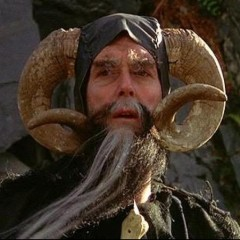deleted by creator
Even a broken clock is right twice day.
cries in digital clock
Even a stuck digital clock is right once a day.
When it’s stuck, yes. When it’s broken and the display is of welll…
It might not be right, but it’s never wrong.
deleted by creator
Is that a thing that happens?
If, say, the RTC dies or similar, then yeah
Fun fact!
deleted by creator
Funny how the imperial system matches at oddly exact numbers with the metric system… Strange indeed.
deleted by creator
Sorry i was /s, the entire imperial system is now defined through the metric system standards. For example, 1in is defined as EXACTLY 2.54cm. Fahrenheit is defined as EXACTLY 5/9(x +459.67) [K] or 5/9(x-32) [C].
Pedantry:
K and °R agree on 0
K and °C agree on the unit difference
°F and °R agree on the unit difference
°R and °Ra are the exact same thing (??)Celsius and Fahrenheit agree on -40, but since they’re scales that scale at different rates there’s bound to be some value where they intersect rather than some meaningful number like Kelvin and Rankine being zeroed to Absolute Zero
Same with 574.59°F = 574.59K
Two lines which are not perpendicular will meet at one point?
Also Rankine, being an absolute scale, theoretically shouldn’t be in ° anything, and it’s only some weird historical quirk that is the reason it usually is called degrees.
I am not sure I follow that. The scale is always relative right? It’s just the zero that’s absolute. But that’s also the case with measuring angles where we do use the degree symbol.
It’s just the zero that’s absolute
Right, that’s what makes Rankine and Kelvin absolute scales, while Fahrenheit and Celsius are relative.
deleted by creator
This screenshot is a little bit hard to see, but from what I can tell:
°RA is pointing at °R and °C
°C is pointing at K and °F
K is pointing at °R and at °F
°R is pointing at °F (and the other gun isn’t aimed at anyone in particular)
°F is pointing at K and at °CEmphasis disproves your claims, sadly. Perhaps there was another way to label them to make it fit, but that’s not what was done here.
°R and °Ra are the exact same thing (??)
I think °R is supposed to be Réaumur
Imagine if some distance measuring system decided their zero was at like 10 feet.
Let me just shorten this down 8 feet
welds on an extra 2 feet
If using log scale, 0 is at -∞
deleted by creator
I mean, the temperature can be -1. But nothing measures negative.
Imagine if it did though.
Rankine and Kelvin have zero at the same point, which is absolute zero, and should not be used with the degree symbol
This concludes my TED talk
According to Wikipedia Rankine is properly used with the degree symbol, but sometimes is not by analogy with Kelvin.
Gross
I absolutely agree! Both should get degrees, because that would make temperatures finally make sense!
(I am aware that the degree symbol has something or other to do about not being absolute yada yada yada 😅)
I went down a huge rabbit hole cause of this. I personally like °F over °C but agree it’s arbitrary. So I tried to make a scale that started at the coldest air temp on earth (some day in Antarctica) and went to the hottest day on earth (some day in death valley) and put the coldest day at 0°A and the hottest at 100°A.
Sadly this made a scale that was less precise than I’d like. I like that I can feel the difference between 73°F and 74°F and don’t want to have to use decimals.
So maybe the end points could be only places where people actually live. Well it looks like some people live in Russia around -70°C and some people live in northern Africa around 50°C so if you just take °C and add 60 you can get a -10 to 110 scale where most temps would fall between 0 and 100. Still has the unit difference of °C (which I don’t like) but I like that most temps are between 0 and 100. I also don’t really like negative temperature since it seems wonky.
To “fix” the unit scale you could just multiply everything by 2 so the difference between each full degree is half as much. So temps would be between -20 and 220. °A = 2(°C + 60) °A = 2(°C) + 120
And it turns out I (basically) created the Fahrenheit scale but moved. °F= 1.8(°C) + 32
TL;DR: I’m stupid and this was fun but also a waste of time lol
Celsius is tied to points of ice melting and water vaporising. Since water is very important for the life on our planet, it makes even more sense than arbitrary chosen meters or seconds.
At sea level. Welcome to La Paz, where the triple point is made up and the freezing point doesn’t matter!
And similarly, Fahrenheit seems to be tied to the internal temperature of the human body, with 100 degrees being the maximum that the average person can handle before their organs start to be damaged.
Yes, Fahrenheit is about humans, and Celsius is about the element that makes life possible. The latter is more generic.
Maximum is 100 °F and minimum is 95 °F. Those seem pretty arbitrary to me
But not everybody experiences temperature the same, so using a system based on what ‘humans’ like, seems a bit useless
It’s not about what humans “like,” it’s about the human bodies’ internal operating temperature and using that as a reference point, the same way that Celsius is about the states of matter of water . Fahrenheit is useful in medicine for that reason, while Celsius is useful anytime a comparison to water is helpful, and beyond that, it’s really just whatever you grew up with. Using a system based on what water “likes” is equally as useless unless you grew up using it as your reference point for temperature in your daily life. Neither 75 Fahrenheit or 23.8889 Celsius tell me whether or not I’m going to need a jacket today unless I’ve already experienced said temperature and use that scale in my daily life.
deleted by creator
does you scale change as Earth warms?
Add a scale revision for each year to the meme
People live in -70c (-94f) weather? How the fuck do they do that?
Once you’re below -6C or so you just need more insulation. -6C to 10C in many ways can be harder to manage due to humidity, especially in wet conditions. My prolonged exposure experience is only down to -30C. I did not have enough insulation, but an extra base layer, better gloves/boots would have been sufficient. I was fine with fairly light clothing down to -18C. I hear -50C is where it starts to get really harsh again.
Your body also adjusts a lot. In the Summer in wearing a puffy indoors at 10C(50F) but in the winter I’ll go out in a t-shirt at -10C, especially if doing manual labor.
That’s crazy. My body doesn’t adjust to cold weather. I’m always cold when it’s cold outside, and I’m talking about cold which is considerably warmer than the cold you’re talking about.
Yeah like i said, -6 to about 10C is bad cold due to humidity. But after a few weeks of daily outside temps below zero i adjust. Colorado was even crazier when I was there. Needed thick socks and snowboots but otherwise the sun was still so warming I’d break a sweat walking with a jacket on.
After a few weeks, the humidity is driven out of the air, and humidity is what allows heat to transfer to/from your body more efficiently. Hit feels hotter when it’s humid, and the same with cold, however hot air can hold more moisture, so it tends to build humidity over time. After a couple weeks with cold weather, the humidity drops and the cold starts to feel less cold.
Water capacity of air drops to about 0.25% around 20F/-6C. That doesn’t take weeks, it’s ideal gas law. Something about that difference between the 0.45%(ish) at 0C/32F is really impactful. That’s absolute humidity, not relative btw. Relative humidity is weather dependent.
In any case, there’s bound to be a lot of other factors such as calorie intake, behavioral changes like exercise, and biases such as the types of activities being done in cold vs hot or the indoors temperature that impact things. The body does tend to find a stasis if it can and that adjustment does occur to some extent. More or less for any given individual. Maybe i made my previous statements too general.
This last winter it got down to 0 F, and 15% humidity. I put every single insulating layer I own on to go outside, and within a minute I was freezing. Granted, I don’t have dedicated cold weather boots, or pants. That was the main point of weakness. So, this year I’m going to invest in some winter pants and boots. My regular ones aren’t cutting it with these record breaking winters that we’ve been getting.
Never heard about °R and °RA before this meme
It’s the Rankine. Some Scottish dude wanted to use Kelvin without using Kelvin. It’s basically the Fahrenheit scale but with 0˚R set at absolute zero.
0˚R = 0Kand1˚R = 0K + 1˚FFrom what I can gather, R and Ra are the same thing?
They are. The post could swap one of them out for Re or Rø instead and it would work, though
https://en.wikipedia.org/wiki/Réaumur_scale
so, they meant °r probably
https://byjus.com/physics/unit-of-temperature/
I had to look out up too!
Now look into °De. It’s upside down!
https://en.wikipedia.org/wiki/Delisle_scale
Why would you do this to me?
Comparing arbitrary degrees to absolutes. Notice K is the only one without the degree symbol…
Would Rankine not be an absolute?
It is, but like everything imperial, it is cursed. So it still has a degree sign by convention despite being an absolute scale
deleted by creator
deleted by creator
Celsius tried to fit too much into 100 notches to please big math.
F is more nuanced with more notches, but the ends aren’t logical. It coukd be shifted perhaps, but how?
If freezing was moved to 0, then water boiling would be 180
Perhaps C could have had a 200 degree range, then it would be closer to F and not so hard to convert.
But also: Scientists are important and we shouldn’t make it too easy, it demeans their work. Maybe make the C scale show water boiling at 183.4521 degrees so scientific calculations are more impressive-looking and respectable.
and not so hard to convert
“Please change the entire world’s system to make it easier for the one country that uses a different one”
It wouldn’t even change the difficulty, really. You’d just wind up multiplying or dividing by 9/10 instead of 9/5.
America moving zero to Celcius’ zero would be better, it would remove one whole step from the calculation
Then if they made their degrees about 9 fifths the size (they could get higher resolution than they’d lose by doing what we do and quoting temperature to one decimal place where needed) it would be dead simple to convert (just change the symbol from °F to °C!)
deleted by creator
Celsius is literally just Kelvin but shifted… So it’s just as friendly for “universal math”.
deleted by creator
K is just shifted °C though and just removes what’s nice about it with freezing/boiling of watee while requiring 3 digit numbers for every temperature you’d encounter in daily life. I think I’d rather use Fahrenheit
The SI unit scales are chosen to fit together to avoid “respectable” scientific calculations.
To heat one milliliter (1 ml) of water one degree Celsius (1 °C) you need one calorie (1 cal) of energy.
Also the dimensions of one milliliter, is one cubic centimeter (1 cm^3), and that amount of water weighs 1 gram (1 g).
Thus 1 liter of water needs 1 kcal of energy to heat up 1 °C.
I’m aware, taught that in school.
Also aware of the real world, those things don’t mesh the same at altitude.
In theory, reality and theory are the same. In reality, they’re not.
I love science when it’s not treated like a religion.
It’s not limited to 100 steps. The decimal system gives you infinite granularity.
then it would be closer to F and not so hard to convert.
So few countries use Fahrenheit that this shouldn’t even be a consideration
This is more like if you measured altitude by counting from sea level vs the center of the earth vs the top of Mount Everest or something
Vs low tide vs high tide vs tidal average…
I think there are 4 different “tallest mountains on earth” depending on if you are measuring from sea level, how you are measuring sea level, or if you are measuring from the base and the mountain and how you are defining the base of the mountain.
When having a beer, I’ve always found it funny that one of the few imperial measurements metric nations kept around, the pint, America went and invented their own. Uncharacteristically a smaller version too.
Every time I hear, “pint” I think of Pippin saying, “they come in pints?!”
So, here in good ol Austria, when we go to an US/UK/Irish pub and order a pint we always get 0,5L and for a 1/2 pint we get 0,33L.
Are half pints half the price of pints? I smell arbitrage.
Sadly, no.
The US has their own version of all the imperial units. Also who uses pints except the Brits?
India, I think. But that’s the Brits’ fault too obviously.
We don’t use pint here. We have some traditional measures that have different absolute values depending on location. We are almost totally metric here.
I could’ve sworn I once had a pint but it was in a hotel lobby in Bangalore so not quite representative. I stand corrected, thanks.
America didn’t really invent their own volume of measurements, they just didn’t keep up.
They used what the British used, then separated from Britain, and didn’t update the units when Britain did.
Metric nations havent kept the pint
I just started looking up the different ways to order beers. Wow. Even if it’s based on the metric system, each country really did go and reinvent the wheel.
They haven’t, but some still sell beer by pints. I can go to a store right now (well not right now, it’s past 10 PM) and buy a pint sized beer and a 0.5l beer from the same company.
Yes, I think the US pint is 16 Oz (2 cups), whereas the UK pint is 20 Oz (4 gills).
0 lbs/lg = Absense of weight.
0 inches/centimeters = Absence of size.
0 Kelvin = Absence of heat.
If something is 0lbs, 0 inches and 0 Kelvin: does it even exist? 🤔
0lbs is absence of weight, 0kg is absence of mass. Terrestrials, smdh…
When avoirdupois pounds and pounds-force are used together I’m pretty sure it’s more common to use ‘lb’ for avoirdupois pounds and ‘lbf’ for pounds-force.
I mean, I think a neutrino is close to that.
But what if they mutate?!
Neutrinos are an elementary part of the universe, they can’t mutate.
You’re confusing them with Latinos.
It’s a joke from this dude
And I finished the joke… Skip to the end with Jimmy mistry.
what the fuck is lg, using TVs as a unit of weight?
But R and K agree on zero
Rankine isn’t pointing a gun at Kelvin because of this, but Kelvin is pointing one at Rankine because Rankine is an abomination that should not be
Meanwhile, Pi and the Fine Structure Constant watching the show, passing each other the popcorn.
The best part about the fine structure constant is that it is not related to any other thing. It just is.
It’s a magic number that just emerges in physics.
And it is not constant.
Even though it is.
Dimensionless numbers, not dependent on any mere mortal, subjective arbitrary unit of measurement like length (meters or yards or cubits - same difference) or time.
Whether you are on Earth or a planet in Andromeda or a billion light-years away, if you study subatomic structure you WILL bump into the fraction 1/137. Just like you will in geometry with 3.1416.
At least Kelvin and Rankine agree on the zero, soooo…
FRRACK















